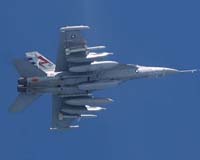| . |  |
. |
Lausanne, Switzerland (SPX) Feb 21, 2011 Composed of diverse elements, mostly of plastic, with little metal used, improvised explosive devices are very difficult to detect. In cooperation with two colombian universities, scientists at EPFL's Electromagnetic Compatibility Laboratory have found a solution. They have developed a device enabling the remote explosion of these mines, by using the energy from their electromagnetic impulses. This type of mine is often used by guerillas or terrorist groups in conflict zones, and is present in many regions of the world, such as Colombia, Iraq and Afghanistan. They kill or mutilate hundreds of thousands of people every year, mainly civilians. Being themselves Colombian, and hence sensitive to this problem, Felix Vega and Nicolas Mora, doctoral students at EPFL, decide to make this project the subject of their thesis. The two researchers had to confront two main technical difficulties. Firstly, they had to find a way of inducting a current that would be strong enough to set off, at a distance, the detonators of the mines, sometimes buried deep in the ground. Secondly, they had to be sure of attaining the resonance frequencies of the various types of mines, which are all constructed in different ways. To scan the highest possible number of frequencies, it's necessary to create short impulses, with a very fast response time. In thus spanning a large spectrum of resonances, "only a fraction of the impulse we create reaches the target, and by then the current is no longer strong enough to explode the mine", explains Professor Farhad Rachidi. "We then realised that in spite of the wide diversity of these mines, they are however all in similar frequency ranges", adds Nicolas Mora. "So we developed a system that concentrates on those, and thus loses less energy." The Electromagnetic Compatibility Laboratory tested this system in Colombia last November, using actual improvised mines provided by a team of professional bomb disposal experts, which they were able to set off at an average distance of 20 meters. This achievement is the result of two years of research work: "Now we have to develop a smaller prototype that is weather-resistant and especially easier to transport in the field", notes Felix Vega. "In Colombia, we often have to travel on small country roads." Scheduled to run for a total of four years, the project has been undertaken with the National University of Colombia and the University of Los Andes.
Share This Article With Planet Earth
Related Links Ecole Polytechnique Federale de Lausanne The latest in Military Technology for the 21st century at SpaceWar.com
 Boeing EA-18G Growlers Deployed by US Navy
Boeing EA-18G Growlers Deployed by US NavySt. Louis MO (SPX) Feb 21, 2011 Boeing has announced that EA-18G Growler airborne electronic attack aircraft have been deployed for the first time by the U.S. Navy. "The men and women of Boeing are honored to see this new capability directly benefit the nation's brave servicemembers around the world," said Kory Mathews, vice president of F/A-18 and EA-18 Programs for Boeing. "The airborne electronic attack capabili ... read more |
|
| The content herein, unless otherwise known to be public domain, are Copyright 1995-2010 - SpaceDaily. AFP and UPI Wire Stories are copyright Agence France-Presse and United Press International. ESA Portal Reports are copyright European Space Agency. All NASA sourced material is public domain. Additional copyrights may apply in whole or part to other bona fide parties. Advertising does not imply endorsement,agreement or approval of any opinions, statements or information provided by SpaceDaily on any Web page published or hosted by SpaceDaily. Privacy Statement |